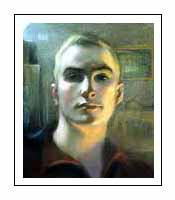Rolf Armstrong (1889 -1960)

American illustrator Rolf Armstrong was born in Bay City, Michigan. Rolf enrolled in the School of the Art Institute of Chicago in 1907. Armstrong traveled to Paris in 1919 to study at the Académie Julian. Armstrong’s first known published work is the cover of Judge magazine from January 27, 1912, also known as “A Live Wire.” Throughout this decade he built a reputation as a cover artist, producing over sixty covers for a variety of magazines including Metropolitan, Puck, Every Week, American Magazine, and The Stewart Lever.
The earliest known calendar featuring an Armstrong image is from 1915. During the twenties and early thirties Armstrong’s work appeared with increasing frequency as calendar art. These were often reused or reworked magazine cover images.
In addition to societal attitudes toward women, Armstrong’s work illustrates other many other aspects of American life in the early twentieth century. These include trends in hairstyles and fashion, popular color schemes, changing concepts of ideal beauty, and cultural trends such as Egyptology (1920s), female participation in sports (1930s), patriotism (1940s), and Hawaiian and western themes (1950s).
In a career of almost fifty years, Rolf Armstrong produced over 500 works. He prided himself on the fact that he worked almost exclusively from live models, as opposed to photographic references. Many if not most of Armstrong’s covers and early calendar images were reused for sheet music, postcards, and all manner of advertising items. In addition, Armstrong produced at least another 60 original images for magazine or other ads, including a series for RCA around 1930. About the same number of unpublished sketches, student works, and portraits are known.
A List of important works of the Artist. Visit the gallery with large-size images, date, size, location and technical information.
References;
